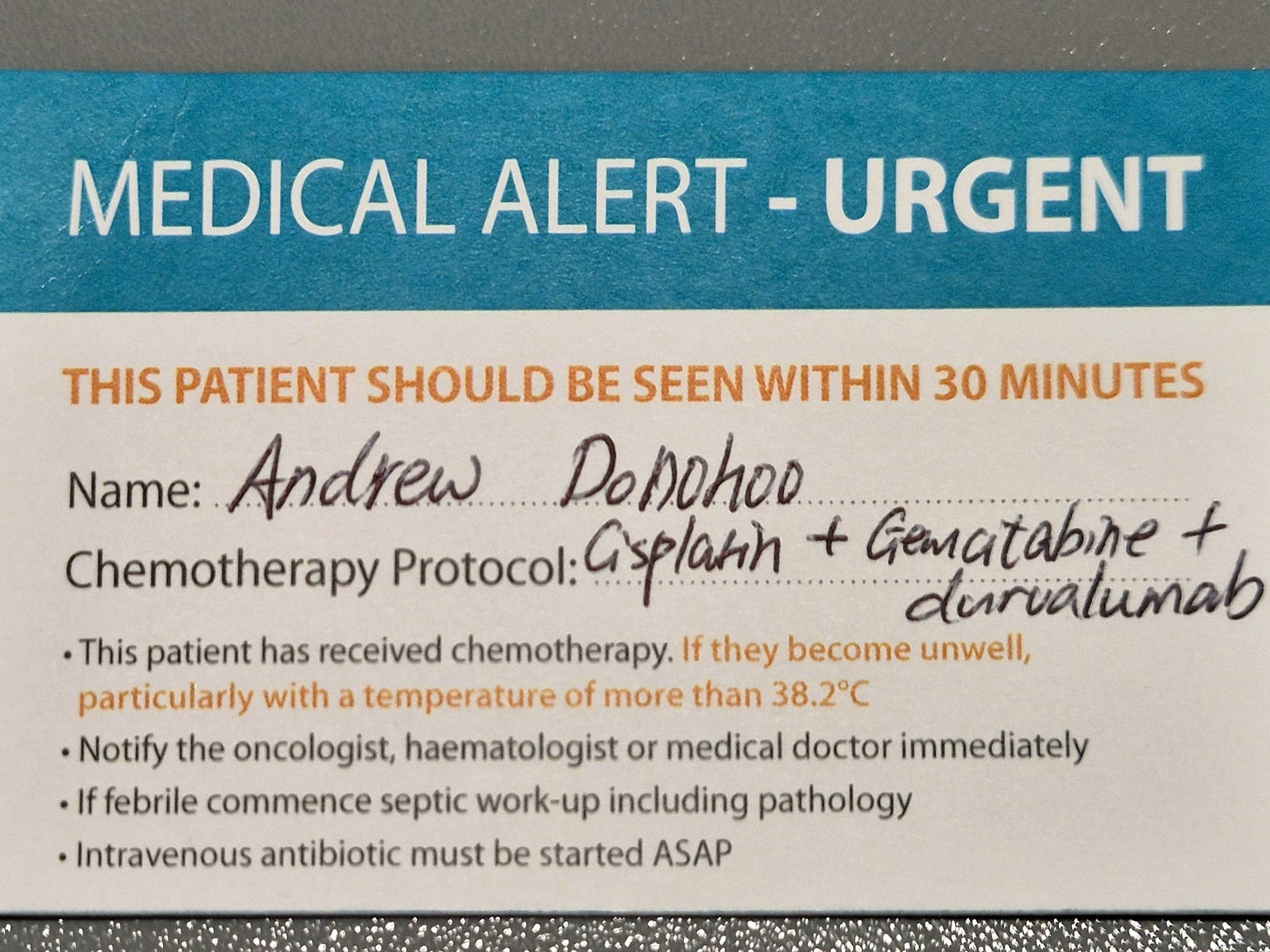I was not previously aware of the troubling historical origins of chemotherapy1 through its links to global warfare.
There is surely nothing more horrific than the use of weapons of mass destruction, especially for the indiscriminate killing of a civilian populace, often predicated on the dubious argument that this shall win over support for their attacker2. In our own hands they are wholly righteous and defensible, not just as a threat or deterrent, but also through deliberate and prolonged use of disproportionate force. Especially if it might lead to a Nobel Peace Prize.
In the hands of the enemy, such weapons are clearly reprehensible and cause for urgent pre-emptive punishment. The contextual asymmetry of the moral high ground prevails.
One of the most questionable mass effect weapon innovations of WWI was that of insidious chemical warfare agents3 including mustard and other toxic gases4 which for good reason were subsequently prohibited by the Geneva Protocol of 19255. Fritz Haber, inventor of phosgene and later Zyklon A and Zyklon B (used to exterminate Jews during the Holocaust) won the Nobel Prize in Chemistry. Yes indeed.
Further research into chemical warfare and countermeasures during the 1920s and 1930s, primarily conducted by the US Army's Chemical Warfare Service, led to the development of nitrogen mustard6 and several potent variants. It was noticed that subjects exposed (let’s assume involuntarily) to nitrogen mustard developed amongst other things significantly reduced white cell counts7. What other types of cells could be damaged, prevented from further division, or destroyed? Many laboratory rabbits were painfully sacrificed to this noble scientific end.
The observed cytotoxicity8 led researchers in the 1940s, including prominent Yale pharmacologists, Alfred Gilman and Louis Goodman9, to investigate the therapeutic effects of mustard agents in cancer treatment. Some of the first steps in demonstrating efficacy involved establishing lymphomas in mice, who probably did not fully comprehend nor assent to the research ethics protocol.
The results after successfully testing nitrogen mustard on human subjects were published in 1946 leading to the subsequent wide acceptance of chemotherapy as a treatment for lymphomas. Nitrogen mustard is effective because of its ability to alkylate10 molecules including protein, DNA and RNA. Other examples of alkylating agents include cisplatin, one of the chemotherapy drugs I am being given.
Chemotherapy is a systemic treatment which affects all rapidly dividing cells in the body hence is much more like indiscriminate bombing than precision strike. Hence the high likelihood of collateral damage and need for additional medications to mitigate the risk. Fortunately more targeted therapies have since emerged through ongoing research, aimed at specific genetic mutations or molecular markers that may be present in the given cancer11.
Today's music is the anti-war protest song that contributed to the early fame of emerging talent Bob Dylan. In this hard to beat live performance, made a few decades later, the powerful lyric is driven home by the lead guitar virtuosity of former Bluesbreaker and Rolling Stone Mick Taylor. Enjoy the irony, I work in Defence science.
https://www.cancer.org/cancer/managing-cancer/treatment-types/chemotherapy.html
https://en.m.wikipedia.org/wiki/Dehousing
https://www.kumc.edu/school-of-medicine/academics/departments/history-and-philosophy-of-medicine/archives/wwi/essays/medicine/gas-in-the-great-war.html
https://www.cdc.gov/chemical-emergencies/chemical-fact-sheets/mustard-gas.html
https://disarmament.unoda.org/wmd/bio/1925-geneva-protocol
https://www.cdc.gov/chemical-emergencies/chemical-fact-sheets/nitrogen-mustard.html
https://www.news-medical.net/health/History-of-Chemotherapy.aspx
https://www.news-medical.net/health/What-is-Cytotoxicity.aspx
https://thepharmacologist.org/goodman-and-gilman-pioneers-of-cancer-pharmacology/
https://en.m.wikipedia.org/wiki/Alkylating_antineoplastic_agent
https://en.m.wikipedia.org/wiki/Targeted_therapy





A reminder that life is rarely black and white.
At least we can learn from our mistakes.